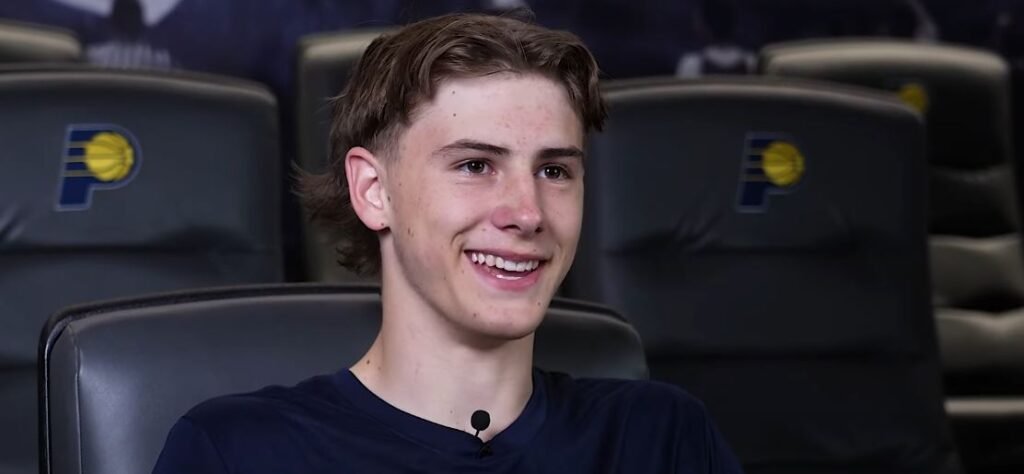
Born into a family steeped in elite athleticism in Melbourne, Johnny Furphy approached competition with a realistic perspective. His siblings have pursued their own athletic careers, his mother was a national-level diver, and his father was a professional Australian football player. However, Johnny’s path is unique since it was carefully constructed by fusing rigorous academic study with organized physical training.
He was given a sports scholarship to attend Maribyrnong College, which had a big impact on his growth. Drills weren’t the only reason to skip class. Furphy managed to balance training demands that would tax even the most seasoned athletes with academic obligations. Amazingly adept at striking a balance between the two, he started to gain recognition for his ability to maintain composure during both classroom discussions and fourth-quarter plays.
Johnny Furphy – Bio and Career Summary
| Full Name | John William Furphy |
|---|---|
| Date of Birth | December 8, 2004 |
| Birthplace | Melbourne, Australia |
| Height | 6 ft 9 in (2.06 m) |
| Weight | 200 lb (91 kg) |
| Position | Shooting Guard / Small Forward |
| NBA Team | Indiana Pacers |
| Draft Info | 2024 – Round 2, Pick 35 by San Antonio Spurs (traded to Pacers) |
| High School | Maribyrnong College, Victoria |
| Development Program | Centre of Excellence (Australian Institute of Sport) |
| College | University of Kansas (2023–2024) |
| Key Achievements | Big 12 All-Freshman Team, All-Big 12 Honorable Mention |
Furphy made brief appearances for Hawthorn Magic by 2021 before joining the men’s team at Melbourne University. Although there were glimpses of his potential in these early games, his trajectory didn’t pick up speed until 2022, when he moved to Canberra’s Centre of Excellence. The program, which is credited with molding NBA-caliber players like Josh Giddey, provided Furphy with a structured schedule that included film analysis, skill development, and analytics sessions. Every day was purposefully planned to optimize performance and create room for deep learning.
His 2023 stats—14.3 points and 5.6 rebounds per game—spoke for themselves. More significantly, he showed game intelligence that was far above his years. Coaches observed his ability to make selfless passes, predict transitions, and read defensive schemes with ease. His style was highly adaptable to different team dynamics because of these habits, which were developed in structured learning environments.
He enrolled at the University of Kansas later that year. He wasn’t the most well-known name in the Big 12 as a freshman, but he soon emerged as one of its most successful surprises. Furphy went on to average 9.0 points and 4.9 rebounds in 33 games, 19 of which he started. Consistent perimeter defense and wise shot selection supported these numbers. He recorded 25 points and 11 rebounds in a spectacular performance against Cincinnati, one that caught the media’s attention for its effectiveness rather than its flash.
Furphy earned a spot on the Preseason Julius Erving Award Watch List and All-Big 12 Freshman honors by combining his basketball IQ with a strong academic work ethic. Despite its prestige, this recognition didn’t cause him to lose focus. He kept arriving early and examining game footage with the same fervor he used to study for exams in high school. Furphy believed that learning was always about the process rather than the end result.
Furphy entered his rookie season with a humble resolve after being selected by the Spurs in the second round of the 2024 NBA Draft and traded right away to the Pacers. Although there weren’t many minutes, his growth curve was constant. He recorded a career-high 17 points and six rebounds in a memorable game against the Orlando Magic in April 2025. That excursion demonstrated not only his talent but also his maturity, demonstrating how his disciplined upbringing enabled him to step up when it mattered most.
Furphy alternated between the Pacers and the Indiana Mad Ants, their G League affiliate, during the season. Furphy’s development was greatly accelerated by this shuttle system, which was frequently difficult for newcomers. Coaches commended his versatility, describing him as exceptionally effective under pressure in games and highly efficient in practice.
He continued to study the game off the court. His teammates said he was quiet and focused in the locker room, reading scouting reports, going over plays on his tablet, and asking insightful questions during film sessions. He even freely discussed how his education at Kansas and Maribyrnong taught him how to take constructive criticism. He now incorporates that growth mindset into his everyday routine.
Johnny Furphy is unique not only because of his athleticism but also because of the basis upon which it is built. His journey demonstrates how talent becomes something noticeably more resilient when combined with a focused education. Furphy’s journey feels surprisingly methodical in a time when young athletes are frequently hurried into stardom—like a craftsman carefully selecting tools before building.
Like Furphy, the new generation of NBA players brings both mental acuity and physical preparedness to the court. Players like Josh Giddey, a fellow Australian, Tyrese Haliburton, and Franz Wagner have demonstrated that structured learning—whether via academy or college systems—offers a competitive advantage that unstructured athleticism cannot. Furphy is a perfect fit for this changing player development paradigm.
Furphy’s future seems bright as the Indiana Pacers embark on a period of youthful revival. He is positioning himself as a component of the team’s long-term strategy rather than merely filling a roster spot. Over the last ten years, teams have placed a higher value on players who are quick thinkers, flexible, and lifelong learners. That call is being answered by Johnny Furphy, who has been trained by systems that highlight those qualities.
